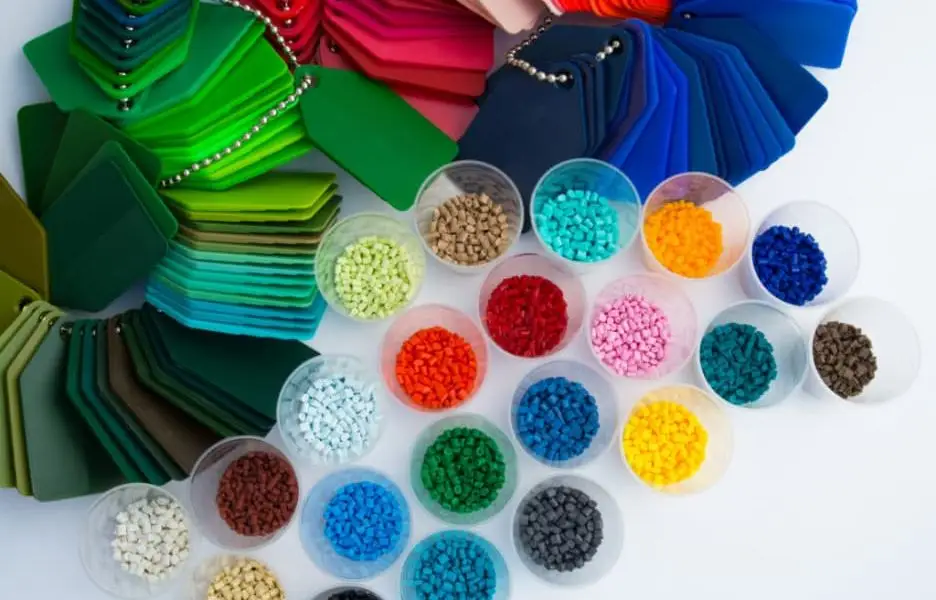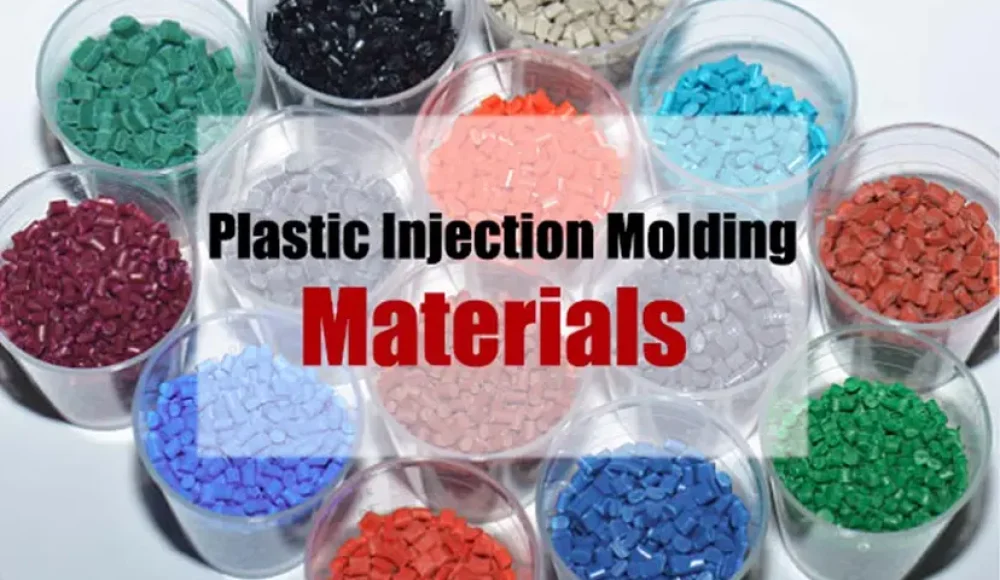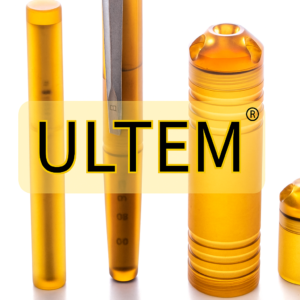La scelta del materiale adeguato è uno dei passaggi più critici injection molding design. The choice of thermoplastic resin determines not only the mechanical strength and durability of a molded part but also its manufacturability, finitura superficiale, costo, and long-term reliability.
This guide provides engineers and designers with a structured framework for quantitatively evaluating injection molding materials. It focuses on the key mechanical, termico, and chemical properties that influence performance, helping you select the optimal resin for your specific application.
Introduzione

materiali per stampaggio ad iniezione di materie plastiche
Choosing a thermoplastic resin for injection molding can be a complex engineering decision. Each polymer family exhibits unique characteristics that respond differently to mechanical loads, temperature variations, e condizioni ambientali. To make a sound selection, engineers must understand the relationship between material structure and performance, as well as the specific demands of the application.
For safety-critical, high-performance, or reliability-sensitive components, a thorough engineering analysis is mandatory. This includes evaluating stress, sottoporre a tensione, and environmental exposure to determine which material meets all operational requirements.
Tuttavia, not every project requires extensive simulation or testing. Many molded components operate under mild conditions—such as room temperature and low loads—where common resins like ABS, polipropilene (PP), or polycarbonate (computer) are more than adequate. For such cases, simplified guidelines—covered later in this guide under “Don’t Make Me Do the Math”—can help non-engineers make practical and cost-effective material decisions.
Why Material Selection Matters
Material selection often becomes a guessing game when there’s a lack of understanding about:
How internal polymer structure affects properties.
How to clearly define real-world application requirements.
Where to find reliable and comparable data for candidate materials.
Even small variations in resin composition or processing parameters can significantly affect resistenza alla trazione, stabilità dimensionale, or impact resistance. Perciò, informed material selection ensures consistent quality, Efficienza dei costi, and predictable performance throughout a product’s lifecycle.
Comparing Common Injection Molding Materials
| Resin Type | Vantaggi chiave | Applicazioni tipiche | Design Considerations |
| POM (Acetale) | Difficile, rigido, forte, bassa frizione, resistente alla fatica | Ingranaggi, pompe, giranti, interruttori, manopole | Sensitive to shrinkage; difficult to paint or coat |
| PMMA (Acrilico) | Excellent clarity, scratch-resistant, low shrink | Lenti, segni, light pipes | Fragile, poor chemical resistance |
| addominali | Difficile, resistente agli agenti chimici, dimensionally stable, basso costo | Electronic housings, handheld devices, cosmetic parts | May show knit lines; thick sections can sink |
| HDPE | Difficile, impatto- and chemical-resistant, leggero | Containers, giocattoli, mobilia | High shrinkage, low surface energy |
| computer (Policarbonato) | Molta forza, clarity, e resistenza all'impatto | Lenti, lighting, alloggiamenti, bulletproof glass | Poor chemical resistance; may bubble in thick parts |
| ABS/PC Blend | Good balance of toughness and processability | Settore automobilistico, elettronica | Lower cost than PC; improved molding properties |
| PP (Polipropilene) | Flessibile, resistente alla fatica, resistente agli agenti chimici | Hinges, Caps, medical tubing | Shrink and warp possible; may void in thick areas |
| SBIRCIARE | High-temperature and chemical resistance | Aerospaziale, pompe, dispositivi medici | Very expensive; Ultem or PPSU are cheaper alternatives |
| PEI (Ultem) | Forte, resistente al calore, dimensionally stable | Medico, lighting, HVAC components | Costoso, but cheaper than PEEK |
| PPSU | High heat and chemical tolerance, sterilizable | Medical trays, aircraft interiors | Thick sections may void; limited color options |
| PAPÀ (Nylon) | Molta forza, resistenza all'abrasione | Ingranaggi, boccole, parti strutturali | Assorbe l'umidità; may warp |
| PBT/PET | Excellent electrical and dimensional properties | Elettrodomestici, settore automobilistico, elettrico | Prone to warp in glass-filled grades |
| LCP | High flow, resistenza chimica, bassa espansione termica | Connettori, PCB | Costoso, anisotropic shrink |
| PPS | High chemical and thermal resistance | Settore automobilistico, electrical housings | Requires precise crystallization control |
About the Standard Material Data Sheet
UN material data sheet provides essential mechanical and thermal properties—typically measured at room temperature. While these values (per esempio., resistenza alla trazione, elongation, flexural modulus) are important, they often describe failure conditions rather than real-world performance. Engineers must therefore interpret data sheets carefully, considering environmental conditions, geometria in parte, and expected loads.
Più di 85,000 commercial plastics exist, grouped into around 45 polymer families. Thermoplastics dominate modern manufacturing, accounting for roughly 85% of all plastic use, while thermosets make up the remaining 15%. Supplementary information from suppliers—like design manuals and case studies—can help bridge the data gaps for engineering-grade materials.
Perfect 👍 Let’s continue and complete the rewritten and SEO-optimized version of your article — picking up from where it left off (“Don’t Make Me Do the Math!") and finishing it with a strong, educational ending that fits your technical SEO writing style.
Don’t Make Me Do the Math!
Many material property charts show ratios like strength-to-weight O stiffness-to-cost, but in practical mold design, few engineers have time to crunch these numbers manually. Invece, the best practice is to create a shortlist of viable materials based on mechanical and thermal requirements, Poi compare specific, real-world properties (per esempio., tensile strength at operating temperature, shrink rate, and melt flow).
Online material databases and supplier datasheets make this easier than ever. Simply filtering by your performance range can narrow hundreds of resins down to a handful of candidates. Once that shortlist is ready, tuo molder or resin distributor can provide detailed test data for validation and part trials.
Suggerimento professionale: Always test with the esatto resin grade you plan to use in production — even small differences in additives, moisture content, or supplier formulations can significantly change flow and shrink behavior.
Test e convalida: Never Skip This Step
Material selection doesn’t end at the data sheet. After you’ve identified one or two promising candidates, prototype testing is essential. Build a small pilot mold, run short shots, and inspect critical features. This reveals how the material flows, fills, and warps in your actual part geometry — insights that simulations can’t always predict.
Typical validation checks include:
Dimensional accuracy — Compare measured dimensions with CAD data.
Finitura superficiale — Confirm texture replication and gloss levels.
Mechanical testing — Evaluate tensile, impatto, and fatigue performance.
Environmental resistance — Test against chemicals, Esposizione ai raggi UV, or temperature cycles.
By catching material-related issues early, you can prevent costly redesigns or warranty claims later.
Partner with Your Molding Expert
Even the most experienced design engineers benefit from collaborating with an experienced molder during material selection. Mold designers and process engineers can advise on:
Proper mold steel choices to match resin abrasiveness or corrosion tendencies.
The need for mold coatings O hot runner compatibility for difficult materials.
Regolazione gate placement, venting, E angoli di tiraggio for specific resin flow properties.
Their production insight often leads to better long-term consistency and fewer processing challenges — ultimately saving both time and money.
Sustainability and Recycling Considerations
Today’s manufacturing environment places increasing emphasis on sustainability. When possible, considerare recycled or bio-based materials. Many resin suppliers now offer PCR (Post-Consumer Recycled) O bio-resin versions of standard polymers such as PP, ANIMALE DOMESTICO, and PA.
While these sustainable options can slightly alter mechanical or color properties, they help reduce environmental impact and support greener product initiatives. Always test these materials under real processing conditions to ensure consistent quality.
Considerazioni finali
Choosing the right injection molding material is one of the most important decisions in part design. The resin you choose determines not only product strength and performance but also costo, durabilità, and manufacturability.
Here’s a quick summary to guide your process:
Define your requirements — strength, temperatura, chemical exposure, aspetto, e costo.
Shortlist materials that meet your property range.
Evaluate process compatibility — shrinkage, moisture sensitivity, Moldabilità.
Prototype and validate before final selection.
Consult your molder to fine-tune production parameters.
A thoughtful, data-driven approach ensures every molded component meets performance targets and budget expectations — the foundation of reliable, repeatable production.
Internal Linking Suggestions (for WordPress)
Guida alla progettazione dell'angolo di sformo
13 Types of Surface Finishes in Die Casting



